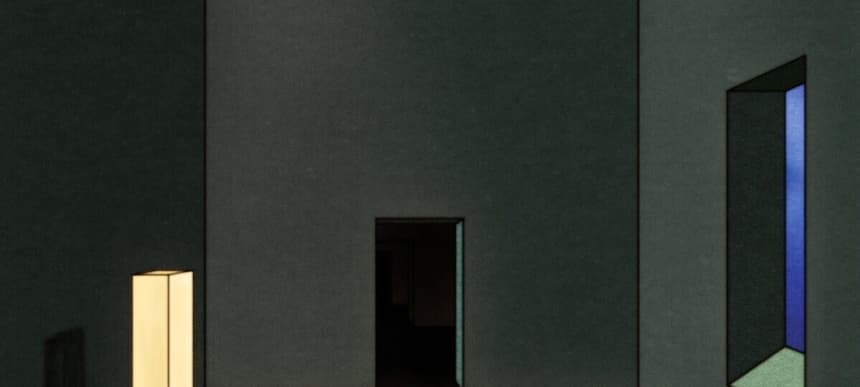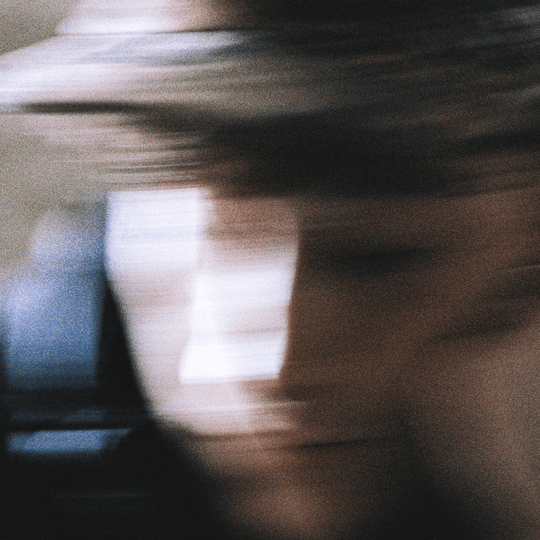
Oneohtrix Point Never - 'R Plus Seven'
Beginning with his eccojams series as Chuck Person and running through his work with Joel Ford in Ford & Lopatin right up to ‘Returnal’, his 2011 album as Oneohtrix Point Never, Daniel Lopatin’s artistic output has been defined by his unrivalled ability to hone in on familiar sounds. With the eccojams series, he unearthed a beauty in MOR-ish pop songs, finding incredibly specific moments in them (Nobody Here, the most enduring and influential track from this period, did so for Chris de Burgh’s seemingly loathsome Lady In Red). The Ford & Lopatin album ‘Channel Pressure’ felt at times like a photorealistic study of 1980s power rock, its production tics and musical flourishes so specific that they went way beyond pastiche or irony, as if the sounds were intuitively absorbed over the years and relayed. On ‘R Plus Seven’, Lopatin’s debut for Warp Records as Oneohtrix Point Never, the familiar plays a more important role than ever.
Here, that familiarity comes from his chosen tools, notably the Korg M1 synthesizer, a workstation synth released at the tail-end of the 1980s. Affordable, adaptable and easy to use, the M1 ended up selling over 250,000 units by the time Korg ceased production in 1994, and its healthy bank of preset sounds (which varied from the usual cheap-sounding e-pianos and MIDI choirs to digital approximations of ethnic instrumentation) had become ubiquitous in the meantime, used in everything from new age records to TV dramas to infomercials to house tracks to work safety videos. These sounds will be familiar to anybody alive and absorbing popular culture during the 1990s, but it’s impossible to specifically pinpoint where that familiarity comes from – for most people, the familiarity will come from having surrounded by the sounds over the years and subconsciously absorbing them.
Lopatin uses and re-contextualises these sounds (possibly actual M1 presets, or possibly sounds that evoke the presets) across the record impressionistically, twisting them into different shapes and forms, the melodies and arrangements so unlike their conventional usage that they sound both immediately recognisable and yet eerily unfamiliar. Zebra is a prime example of this. It has the rhythmic thrust of a rave record and introduces the M1’s Organ02 patch, popularised over countless house records (notably Robin S.’s Show Me Love), but uses it in a way that is atypical to how these sounds have historically been used. Later, during its closing moments, Lopatin introduces a snippet of a sound that is used to accent tense moments during The X-Files. The result means that there’s nothing nostalgic here despite the weird familiarity – they may be associative or allusive sounds, but they still seem to “belong” to Oneohtrix Point Never.
Calculated as this might all sound, the album needn’t be taken as an academic experience. ‘R Plus Seven’ is still an enjoyable album to listen to, probably moreso than any other Oneohtrix Point Never album, with at least one thing to love on even the more middling tracks. The otherwise meandering Inside World breaks to a flood of strings towards its end, while the traditional structures and progressions of Along and its shifting mood are quite gorgeous and affecting. Still Life is structured like a rock song, its quiet breakdown building up to an explosive, anxiety-inducing finish. Closing track Chrome Country is a beautiful composition. The album is also notably more exuberant and colourful than the dread and darkness-infused ‘Replica’. At times it’s ecstatic – a word that feels particularly relevant given the M1 was released around the same time that ecstasy entered the UK, its sounds colouring many a rave, chillout and IDM record, giving this album a particularly high feeling.
At other times, though, it’s more claustrophobic. A sonic counterpart here might be James Ferraro’s landmark ‘Far Side Virtual’, notably in tracks like Americans, where Lopatin uses a kalimba-esque synth to evoke a distinctly Western view of “world music”, a technique that Ferraro used extensively across that record. And like ‘Far Side Virtual’, it has a satirical edge – Lopatin told FACT that it was inspired by Battlestar Galactica, where “they don’t know how to easily characterize alien civilization so they use world music instead. So the capitalist vision of alien life is basically the reductive, canned world instrument.” But it’s also in its sheer everything-ness, going through various movements and permutations across its five minute running time. While this isn’t entirely new territory for Lopatin – projects like MEET YOUR CREATOR, the audio-visual piece he put together for Saatchi & Saatchi New Directors' Showcase in 2012, clearly informed the album’s sound palette – it isn’t one he has explored on a full-length just yet. The effect as disorientating as anything on Ferraro’s record, albeit with far less novel and overt intentions. Lopatin doesn’t really dictate, prescribe or assign meaning to this music (something that actually recalls a different Ferraro album, his impenetrable ‘Sushi’).
That final point is probably the most important in appreciating the album. Because it is very obtuse, new listeners may not find this the easiest entry point into Lopatin’s output – it might come across as bewildering, cheap sounding and difficult to emotionally invest in. Those that have followed him over the years will probably have enough trust and faith in his instincts that ‘R Plus Seven’ is a rewarding addition to his discography. Either way, 'R Plus Seven' is a satisfying evolution in a career that has spawned many wildly different, incredibly ambitious albums.
8/10
Warp released 'R Plus Seven' on the 30th September 2013.













